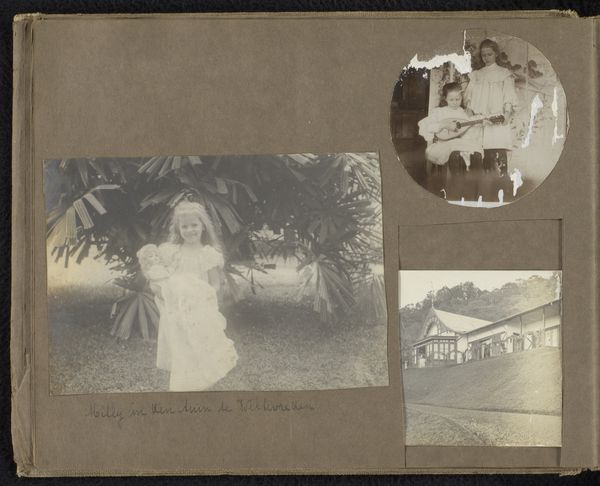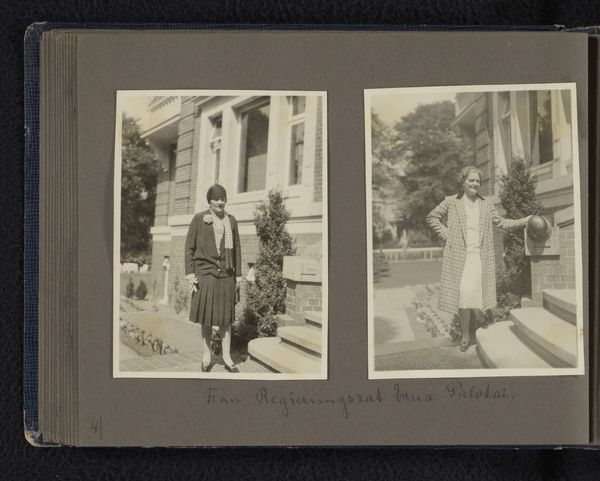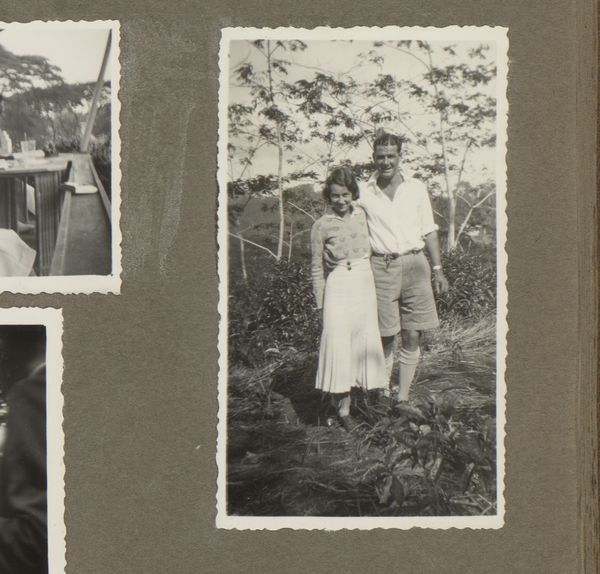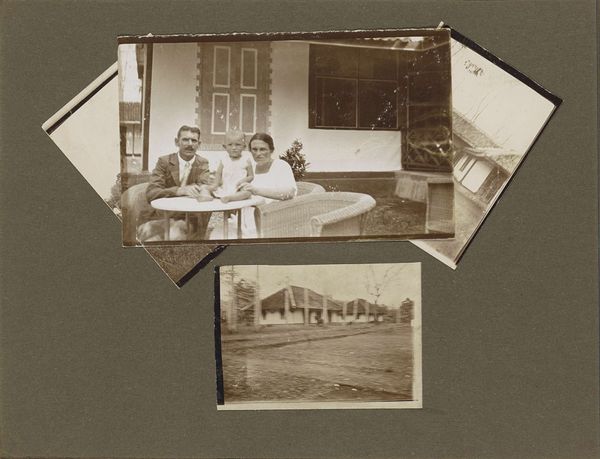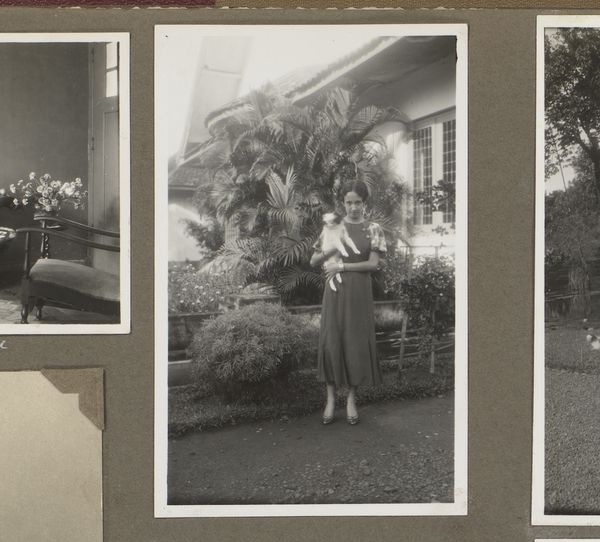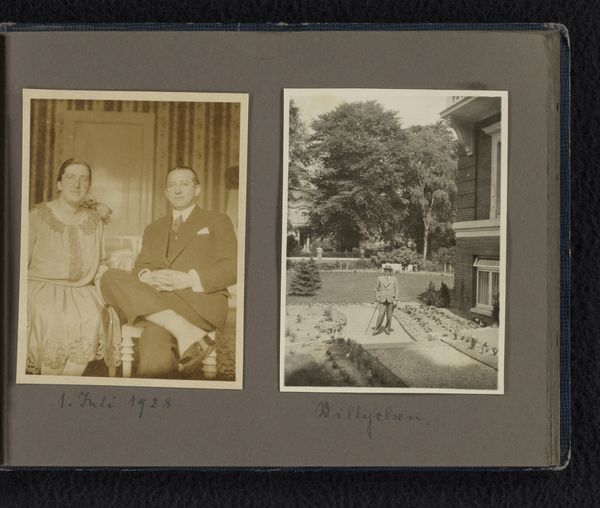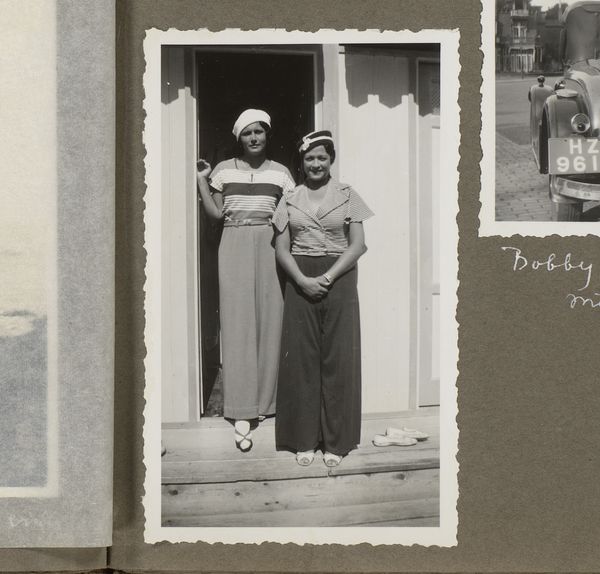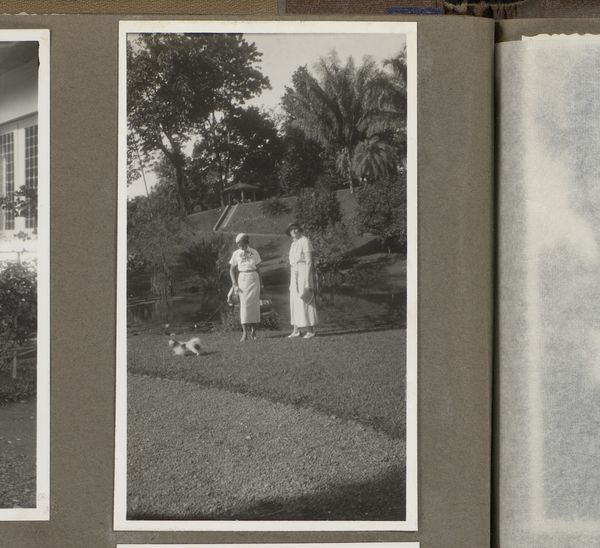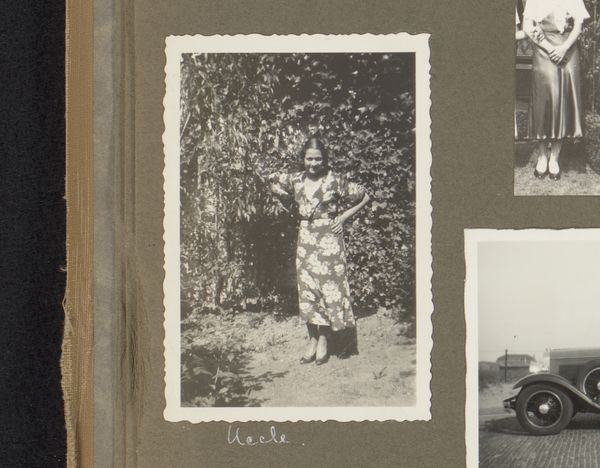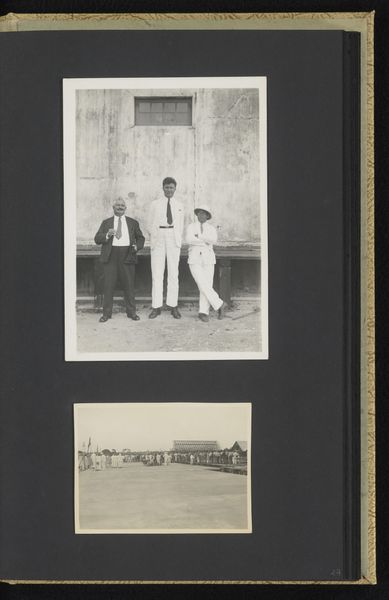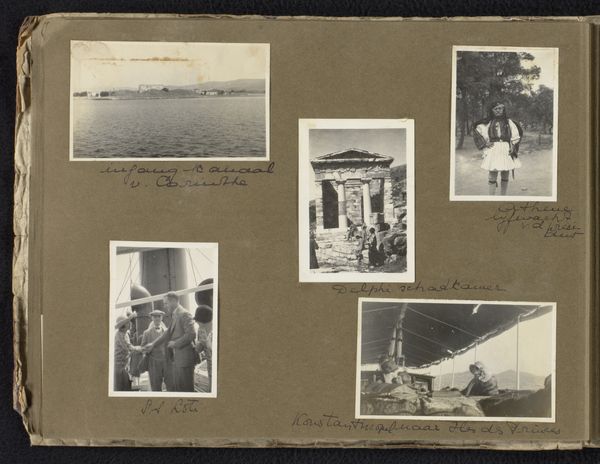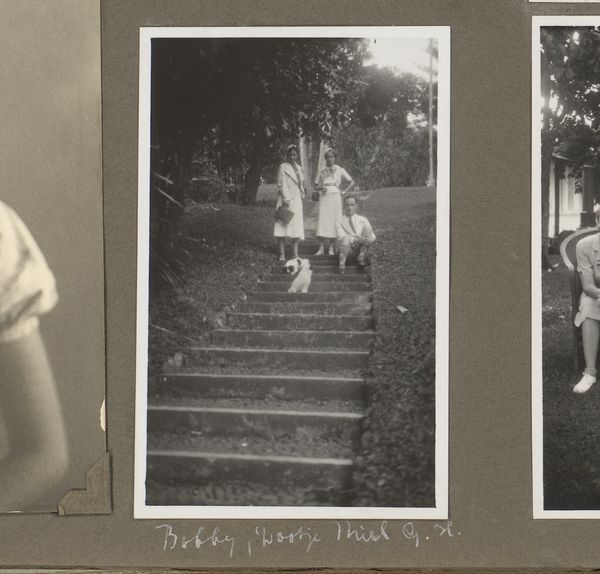
photography
#
photography
#
cityscape
#
realism
Dimensions: height 88 mm, width 62 mm
Copyright: Rijks Museum: Open Domain
Curator: The greyscale tones in this photograph give it a strong vintage feel. Editor: Indeed. Let’s take a closer look at this gelatin silver print, taken in 1932. It's entitled "Portret van Wilhelmina van Zijll de Jong in het Jubelpark, Brussel," which translates to "Portrait of Wilhelmina van Zijll de Jong in the Cinquantenaire Park, Brussels". Curator: It has a sort of snapshot quality; spontaneous and unrehearsed. Editor: I agree. See how the framing places the sitter to the left, yet the majestic arches and reflecting pool mirror her presence. This juxtaposition invites reflection on how individual experience intersects with broader historical narratives embodied in monumental architecture. Curator: Do you think that architecture has any symbolic meaning? It looks so massive. Editor: I see it as a powerful statement of early twentieth-century Belgian national pride. Its imposing structure in combination with the figure almost makes it appear like she is just visiting, just consuming the city like another tourist. Curator: A fair point. The tactile surface, the borders of the image, and how the photograph exists among the others on that page – I think we should also consider how this might speak to the rise of amateur photography and visual record-keeping in this era. Was the democratization of photographic technology shaping social memory and everyday lives? Editor: Perhaps it's a deliberate attempt to formalize the scene – a family archive crafted into something more aesthetically coherent. Curator: That makes me think, we need to remember that photography changed both the ways people remembered experiences but also what they thought was worth remembering. Editor: Absolutely. Whether approached as personal documentation or artistic construction, analyzing its visual components reveals intriguing sociohistorical layers embedded within this early photographic work.
Comments
No comments
Be the first to comment and join the conversation on the ultimate creative platform.
